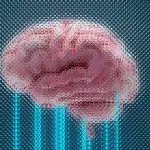Scientists at the University of Rochester have made groundbreaking progress in quantum technology, successfully pairing light and sound particles to address a long-standing challenge in developing a scalable quantum internet.
The progress comes from the collaborative efforts of Rochester’s Institute of Optics and the Department of Physics and Astronomy, leading to the discovery of a technique for coupling light to surface acoustic waves. This method could be applied to convert quantum bits or qubits, which are information stored in quantum systems, into optical fields for long-distance transmission.
Similar to a wave in the ocean or seismic tremors along the ground, surface acoustic waves are vibrations that glide along the exterior of materials. Besides their multiple uses in electronics, they have also found applications in quantum tech, thanks to their ability to create precise cavities that can be utilized for precise timing.
“In the last 10 years, surface acoustic waves have emerged as a good resource for quantum applications because the phonon, or individual particle of sound, couples very well to different systems,” says William Renninger, an associate professor of Optics and Physics at Rochester.
Current approaches in quantum application involve transforming surface acoustic waves into electricity and vice versa using piezoelectric materials. However, one big disadvantage is the diffusion of phonons that occurs when electricity is applied to mechanical fingers and inserted into the middle of the acoustic cavity.
The scientists at Rochester have found a workaround to that using a less invasive technique. In their study, published in Nature Communications, the team eliminated the need for mechanical contact by simply shining light on the acoustic cavities.
“We were able to strongly couple surface acoustic waves with light. We designed acoustic cavities, or tiny echo chambers, for these waves where sound could last for a long time, allowing for stronger interactions. Notably, our technique works on any material, not just the piezoelectric materials that can be electrically controlled,” explained PhD student Arjun Iyer, who is also the first author of the paper.
Renninger further claimed that their surface acoustic wave devices have added benefits, such as simple fabrication, small size, and the ability to handle large amounts of power.
Additionally, the researchers were confident that their techniques could be extended to other purposes apart from hybrid computing. These include spectroscopy, sensors, and the study of condensed matter physics.











